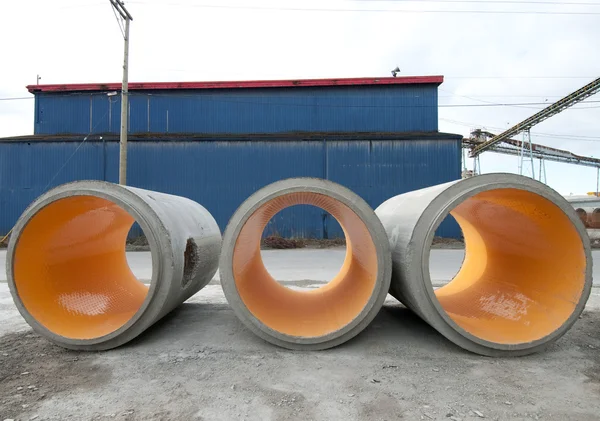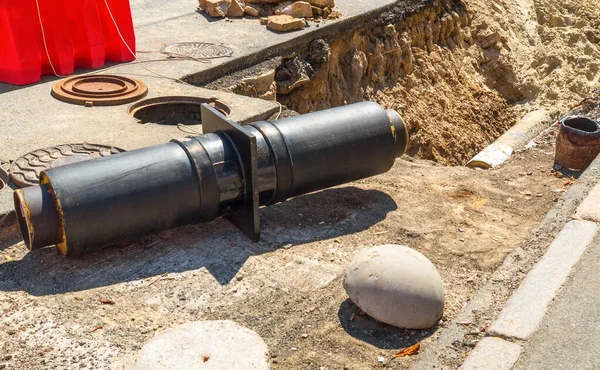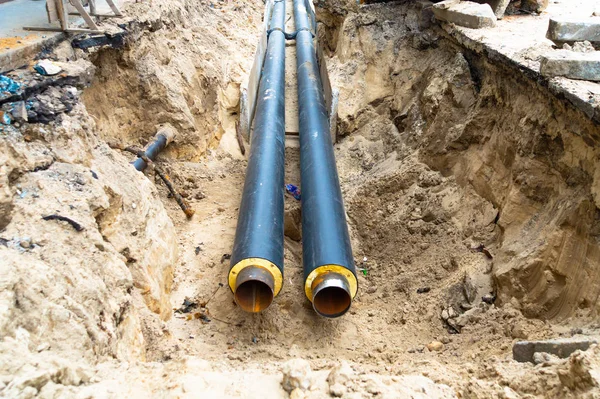Do you know the importance of sewer pipe lining? When it comes to maintaining your home, one of the most critical yet often overlooked components is the sewer system. But what happens when this vital system begins to fail? The traditional approach might have involved digging up your yard, but there’s now a more efficient and less invasive solution—sewer pipe lining. This innovative method is revolutionizing how homeowners, DIY enthusiasts, plumbers, and property managers handle the maintenance and repair of sewer pipes. In this blog post, we’ll explore everything you need to know about sewer pipe lining, from its benefits to the process itself.

Understanding Sewer Pipe Lining
Sewer pipe lining is a modern method designed to repair existing sewer pipe without the need for extensive digging. Unlike traditional methods that require uprooting landscapes and disrupting daily life, pipe lining provides a seamless solution by working within the existing infrastructure. This approach uses a flexible lining material, often an epoxy pipe lining or similar polymer, to create a new pipe within the old one, effectively sealing all the cracks and leaks.
Schedule Service Online
Get a free estimate so you know what you're signing up for
"*" indicates required fields
For Emergency Services Call: 410-255-9300
The beauty of this technique lies in its ability to extend the lifespan of your sewer lines without the hassle of complete pipe replacement. By focusing on the internal pipe coating rather than external digging, sewer pipe lining offers a practical alternative that’s both environmentally friendly and cost-effective. Understanding the nuance of this method can save you time, money, and significant inconvenience.
The Benefits of Trenchless Pipe Lining
One of the primary reasons homeowners and professionals are turning to trenchless pipe lining is its minimal invasiveness. Traditional repairs are notorious for the mess they create, but trenchless solutions require only two access points—one at each end of the pipe. This means your beautiful garden or meticulously manicured lawn remains intact.
Additionally, trenchless pipe lining is a faster process. With less digging and hauling of debris, the repair can be completed much quicker than traditional methods. This speed not only reduces labor costs but also minimizes the disruption to your household or business operations. Another significant advantage is the durability of the materials used; the thick epoxy coating is designed to withstand root intrusion and other common causes of pipe damage.
Finally, trenchless pipe lining is a cost-effective solution. While the upfront costs may appear higher than traditional methods, the reduced labor and restoration costs, combined with the extended lifespan of the pipes, make it a wise investment. For DIY enthusiasts and property managers, this approach provides peace of mind knowing that their sewer systems are fortified for the future.

How Does the Lining Process Work?
The lining process begins with a thorough inspection of the existing sewer pipes. This is typically done using a camera to identify any cracks, leaks, or other issues that need addressing. Once assessed, the pipes are cleaned to remove any debris that could interfere with the lining.
Next, a textile liner, which is a flexible tube coated with epoxy resin, is inserted into the pipes. This liner is then inflated to press it against the walls of the old pipe, allowing the resin to adhere effectively. The curing phase involves introducing hot steam or water, which hardens the resin into a durable, seamless pipe.
The result is a cured-in-place pipe (CIPP), essentially a new pipe within the old one, that restores functionality without the need for extensive excavation. This method not only seals existing pipes but can also improve flow efficiency and prevent future damage from root intrusion or ground shifts.
Exploring Different Lining Materials
A key aspect of the sewer pipe lining process is the selection of the right lining material. Common options include epoxy resin and polyvinyl chloride (PVC), each offering distinct benefits. Epoxy resin is favored for its strong adhesion and durability, making it ideal for creating a seamless pipe that can withstand high pressures and temperatures.
On the other hand, PVC liners are often chosen for their flexibility and resistance to chemical corrosion, making them suitable for areas with varying pH levels in wastewater. In some cases, a combination of both materials may be used to optimize the balance between strength and flexibility.
Selecting the appropriate material is crucial, as it directly impacts the longevity and effectiveness of the repair. Working with professional plumbing companies ensures that you get expert advice tailored to your specific situation, leading to a more successful outcome.

Addressing Common Myths About Pipe Lining
Despite its benefits, several myths surround sewer pipe lining. One common misconception is that it’s only suitable for minor repairs. In reality, this method can address significant damage, including a pipe bursting and severe root intrusion, providing a comprehensive solution for various plumbing issues.
Another myth is that pipe lining is a temporary fix. However, when done correctly, a lined pipe can last as long as a new one, with some manufacturers offering warranties of up to 50 years. This longevity makes it a reliable choice for property managers looking to maintain infrastructure without constant repairs.
Finally, some believe that pipe lining reduces the diameter of the pipes, affecting flow rates. While the internal diameter is slightly reduced, the smooth surface of the new lining often improves flow efficiency, offsetting any losses. Understanding these truths can help you make informed decisions about your plumbing needs.

Identifying the Right Time for Pipe Lining
Knowing when to opt for sewer pipe lining is crucial. Signs such as recurring blockages, slow drains, or unusual odors in your home or building are indicators that your sewer pipes may need attention. Regular inspections, especially in older properties, can help catch problems early before they necessitate major repairs.
Another factor to consider is the age of your current sewer system. Pipes made from materials like cast iron or clay are more prone to deterioration over time, making them ideal candidates for lining. If you’re planning significant landscaping or renovations, it might also be an opportune moment to assess your sewer lines to avoid future disruptions.
Consulting with professionals can provide clarity on the best course of action, ensuring that your choice to line the pipes aligns with your property’s long-term needs and your budget.
Selecting the Best Plumbing Companies for the Job
Choosing the right plumbing company is essential to achieving a successful sewer pipe lining project. Look for companies with experience in trenchless technology and a proven track record of completed projects. Reputation is key; reviews and testimonials can offer insights into the reliability and quality of service you can expect.
It’s also important to consider the range of services offered. A company that provides comprehensive plumbing solutions, including inspection, cleaning, and maintenance, can offer more holistic support. Transparency about costs and timelines is another indicator of a trustworthy provider.
Finally, a good plumbing company will offer a clear explanation of the lining process and answer any questions you may have. Their willingness to educate you on the details reflects their commitment to quality service and customer satisfaction.
Comparing Pipe Lining to Traditional Methods
When considering pipe repair options, it’s worth comparing pipe lining to traditional methods. Traditional pipe replacement involves excavating large sections of land, which can be costly and disruptive. This method also requires significant time and resources, extending the project’s duration.
In contrast, sewer pipe lining is less invasive, preserving the aesthetics of your property while reducing labor and material costs. The quick installation process minimizes downtime, allowing you to resume normal activities sooner. Additionally, the materials used in pipe lining are designed for longevity, providing a sustainable solution that reduces the need for future repairs.
Ultimately, the choice between these methods depends on the specific condition of your pipes and your personal preferences. However, for many, the advantages of trenchless pipe lining make it the preferred solution.

Evaluating the Environmental Impact of Pipe Lining
Sustainability is increasingly important in construction and home maintenance, and sewer pipe lining offers an environmentally friendly alternative to traditional methods. The reduced need for excavation means less soil disturbance and preservation of natural landscapes.
Furthermore, the materials used in trenchless pipe lining are often recyclable, contributing to a circular economy. The longevity of lined pipes also means fewer replacements are needed over time, conserving resources and reducing waste.
For environmentally conscious homeowners and businesses, the opportunity to repair infrastructure without significant ecological impact is appealing. Pipe lining aligns with broader sustainability goals, making it a smart choice for the future of plumbing.
MD Sewer and Plumbing provides quality sewer pipe lining services with many more beneficial services to keep your plumbing and sewer systems in tip top shape.
Staying Informed on Innovations in Pipe Lining
The field of pipe lining continues to evolve, with new technologies and techniques emerging regularly. Staying informed about these advancements can help you make the most of this innovative solution. From improved materials to enhanced installation methods, the future of sewer pipe lining promises even greater efficiency and effectiveness.
Engaging with industry publications, attending workshops, and connecting with professionals are excellent ways to keep up with the latest developments. This knowledge not only equips you to make better decisions for your property but also positions you as an informed advocate for modern plumbing solutions.
By keeping abreast of innovations, you can ensure that your approach to sewer pipe maintenance remains cutting-edge, providing peace of mind and optimal performance.
Conclusion The Future of Sewer Pipe Lining
Sewer pipe lining represents a significant advancement in plumbing technology, offering a less invasive and more durable solution to traditional pipe repair methods. For homeowners, DIY enthusiasts, plumbers, and property managers, understanding the nuances of this method can lead to more informed decisions and better outcomes.
Whether you’re dealing with cracked pipes, root intrusion, or simply want to future-proof your plumbing, sewer pipe lining offers a viable path forward. By choosing experienced professionals and staying informed on the latest developments, you can enjoy the benefits of a well-maintained sewer system for years to come.
Explore further resources or consult with experts to discover how sewer pipe lining can enhance your property’s infrastructure. The future of plumbing is here—embrace it and see the difference it can make for you.




